24 travel tips every first-time Chicago visitor needs to know
Goin’ to Chicago and African American “Great Migrations”
This multimedia essay presents two excerpts and accompanying commentary from the film Goin’ to Chicago , a documentary which takes as its subject the African American migration out of the Jim Crow South during the twentieth century. Director George King describes his approach to the making of this film, offering insights into its editing and construction.
“Goin’ to Chicago and African American ‘Great Migrations'” was selected for the 2010 Southern Spaces series “Migration, Mobility, Exchange, and the US South,” a collection of innovative, interdisciplinary scholarship about how the movements of individuals, populations, goods, and ideas shape dynamic spaces, cultures, and identities within or in circulation with the US South.
Introduction
Filmed during the 1990s and released on PBS in 2000, Goin’ to Chicago is a sixty minute film about the largest internal movement of people in United States history—the Great Migration. Between 1916 and 1970, six million African Americans left the cotton fields and segregation of the rural South for northern, midwestern, and western cities, changing the American cultural and political landscape. The film weaves together personal stories with archival footage, photographs, and a soundtrack featuring blues, rhythm and blues, and gospel music—much of it recorded specifically for Goin’ to Chicago.
This multimedia essay features two clips exploring the experiences of migrants to Chicago and the subsequent decline of the industrial opportunities that initially attracted them. Director George King provides insights into the experience of filming these clips and his choices for constructing and editing this documentary.
Bronzeville
“Bronzeville,” Video excerpt from Goin’ to Chicago, a documentary film by George King, originally broadcast on PBS in 2000.
In making Goin’ to Chicago, I wanted to recognize the power of expressive culture—language, food, spiritual life, and particularly music. I also wanted to present the Great Migration as contemporary rather than “history,” present rather than past. This clip demonstrates how viewers are brought into dynamic environments like Monday nights at Artis’s Bar in South Side Chicago—a site that demonstrates where generations of migrants transported and reinvented the blues. By the 1990s, most blues clubs were outside of the black neighborhoods where southern African American migrants initially developed the Chicago blues sound during the first half of the twentieth century. At the time of our filming, the blues scene in Chicago had shifted to the city’s North Side, catering mainly to younger white patrons, students and tourists. Resisting these trends, Artis’s remained on the South Side, retaining the spirit of the earlier blues in contemporary form: as a chic, urban, juke joint. The musicians featured here, Billy Branch and the SOB (Sons of the Blues) Band, are the sons of former blues musicians. The lead singer describes his rural Mississippi background in connection to musicians such as Muddy Waters and Howlin’ Wolf, who as he describes, grew up working “mighty hard, and they didn’t get paid very much.” The SOB Band demonstrates the power, excitement, sexuality, and humor of classic Chicago blues. They were not just another act recycling familiar material to curious conventioneers. Against the film crew’s and his fellow band members’ expectations, the lead guitarist broke into an electrifying ten minute solo that “peeled the paint off the walls,” and also used up all of our film. It was a spectacular performance, but unfortunately could not be edited into the time constraints of a sixty-minute film.
The next section underscores the consequences of low pay in the rural South by featuring interviews with steelworkers as they recall moving north to find economic opportunity. Blues singer Koko Taylor, who migrated from the Memphis area to Chicago, remembers earning five dollars a day cleaning houses after making three dollars a week in the South. The pay increase did not mean shorter hours. In recognition of how African American migrants fueled Chicago’s economy at the time, John Wiley describes working two jobs for twenty-five years.
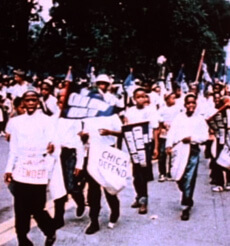 |
| Bud Billiken parade in “simulated newsreel,” Goin’ to Chicago, 2000. |
The clip ends with a simulated newsreel. This particular example celebrates Bronzeville, a name coined to describe the vitality of Chicago’s South Side in its heyday during the 1930s and ‘40s. The “newsreel” was a device we used in the film to provide factual information in an entertaining manner. The four newsreels in the documentary evolved out of a comment from a researcher that I hired to track down historical film and video of black Chicago. One day during a phone call she expressed anger and frustration at failing to find much archival footage. “My history was not recorded,” she said. The predominantly white-owned media had never shown much interest in the black population, unless it was to film a disaster such as a fire. There were little or no filmed records of black life from the 1940s to 1960s on the South and West Sides. So we decided to create what had not existed. We edited footage from a variety of historical archives and collections into short newsreels complete with buoyant music and narration characteristic of the 1940s.
The example presented here features Bronzeville’s annual Bud Billiken Parade in 1954. This footage was not shot for or used in a contemporary newsreel, but we made it into one by writing appropriate narration, using an upbeat midwestern voice, and adding music. We created our own newsreel company with logo. Complaining that you cannot create artifacts, some historians have criticized these newsreels, but they are intended to be an entertaining, engaging, storytelling device. Giving them the prominent title, “Simulated Newsreel,” I hoped they could never be confused with real artifacts. I actually wanted to call them “fake,” but PBS objected.
Economic Downturn
The second video excerpt addresses the decline of economic vitality for southern African American migrants in Chicago during the 1960s and ‘70s. It also features various spaces that were demolished for the purposes of “urban renewal” after we filmed in the early 1990s. In this way, Goin’ to Chicago provides a last look at several black Chicago institutions.
“Economic Downturn,” Video excerpt from Goin’ to Chicago, a documentary film by George King, originally broadcast on PBS in 2000.
This clip opens with David Lindsey and friends performing “Downhome Blues” at Maxwell Street, the famous street market on Chicago’s West Side. In the last century, Maxwell Street transformed from a commercial center for Jewish patrons, to African American, to Hispanic patronage. In 1994 the market was relocated—swept up in the expansion of the University of Chicago. From the 1920s when African American migrants made up the majority of residents in the area, the market was a place to hear the blues—shopkeepers and stall-holders would encourage musicians to set up in front of their places to draw a crowd.
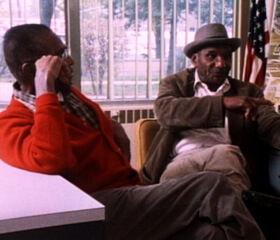 |
| Laid-off steelworkers, Goin’ to Chicago, 2000. |
The next section revisits the steelworkers seen in the first clip. They describe how they were laid off after decades of steady employment. As one laid-off worker, Alvin Robertson, explains, “At my age [fifty-two], I didn’t think I was going to have to look for another job in my whole lifetime.” Their story represents the plight of many migrants who had prospered with jobs in the expanding manufacturing and service industries after World War II in the “City of Big Shoulders.” Twenty years later, industrial jobs migrated west, to non-union southern states, or outside the United States to developing countries.
Economic decline plays into the transformation of once vital neighborhoods on the South and West Sides, where the housing and infrastructure started to crack and crumble. Southern migrant Geri Oliver, owner of the celebrated Palm Tavern, talks about how the once famous 42nd Street strip has deteriorated. The Palm Tavern functioned as an unofficial clubhouse for generations of African American musicians, including Duke Ellington, James Brown, Count Basie, Quincy Jones, and Muddy Waters.
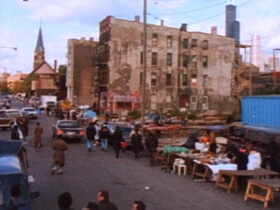 |
| Maxwell Street Market, Goin’ to Chicago, 2000. |
During the 1980s and ‘90s, political neglect, economic inequality, and systemic racism contributed to the continuing decline of Chicago public housing facilities, many of which became lawless, drug-infested environments where residents lived in fear of gangs. The clip ends with four young rappers from the projects describing life in Cabrini Green, one of Chicago’s most notorious projects on the Near North Side. Even though we had hired security, I recall that a fourteen year-old tried to “shake down” the film crew that afternoon. We elected to call his bluff, which proved to be all it was, but by that time Cabrini was not a place to take threats lightly.
Unintentionally, this clip also documents the last days of the Palm Tavern, Cabrini Green and the Robert Taylor Homes housing projects, and the Maxwell Street Market. By the mid-1990s, the federal government mandated the destruction of thousands of public housing units, with plans to develop a mixed income approach to public housing, particularly in these areas of Chicago, though the development process has been controversial because tenant relocation did not keep pace with tenant displacement.
Conclusion
I made Goin’ to Chicago in response to what I perceived as a lack of awareness about the impact of the Great Migration on American politics and culture. When we made the film there was little non-scholarly nonfiction available on the subject, and no documentary films that focused on the migrations. Many white Americans and younger African Americans were unaware that this social movement even occurred—that in roughly sixty years African Americans had transformed from a primarily rural and southern population to a primarily urban and non-southern one.
Certainly now more information is available. However, with the exception of a BBC/Discovery Channel program that quickly fell out of public notice and access, Goin’ to Chicago remains the one documentary film that addresses this important phenomenon. It took about five years of research and production to make the film. Sadly, due to recent cut-backs in public funding, I doubt that this film could be made today.
Recommended Resources
Print Materials
Baldwin, Davarian L. Chicago’s New Negroes: Modernity, the Great Migration, and Black Urban Life. Chapel Hill: University of North Carolina Press, 2007.
Grossman, James R. Land of Hope: Chicago, Black Southerners, and the Great Migration. Chicago: University of Chicago Press, 1991.
Lemann, Nicholas. The Promised Land: The Great Black Migration and How It Changed America. New York: Vintage Press, 1991.
Wilkerson, Isabel. The Warmth of Other Suns: The Epic Story of America’s Great Migration. New York: Random House, 2010.
24 travel tips every first-time Chicago visitor needs to know
Chicago is a friendly city for tourists, but we’ve collected a few useful things to know before you arrive.
Welcome to Chicago! We’re glad you’re here (or considering a trip, at least). Whether you’re visiting on business or pleasure, we know it can be daunting to travel to a new city for the first time. There are logistical hurdles: figuring out the public transportation options, navigating the grid system, knowing the best neighborhoods to stay in. And then there are the cultural questions: What’s the best time to visit? What should you do with your time? Is deep dish truly all it’s cracked up to be? We’ve drawn from our experience as Chicagoans, and polled our own visiting friends, to help prepare you for what you should know as a new arrival.
RECOMMENDED: Your essential Chicago travel guide
An email you’ll actually love
Get into a relationship with our newsletter. Discover the best of the city, first.
By entering your email address you agree to our Terms of Use and Privacy Policy and consent to receive emails from Time Out about news, events, offers and partner promotions.
Awesome, you’re subscribed!
Thanks for subscribing! Look out for your first newsletter in your inbox soon!
Chicago travel tips for first-time visitors

1. Take the “L” to and from the airports.
Beat the traffic and surcharges and skip the taxi or rideshare when you arrive. Our regular Chicago Transit Authority “L” (short for “elevated”) trains offer direct service to both Chicago airports: the Blue Line serving O’Hare and Orange Line for Midway International Airport. A $2.50 fare from Midway or $5 from O’Hare for regular service downtown in under an hour feels like a steal to us when we travel to other cities without such easy airport access.

2. Get a three-day (or seven-day) CTA pass.
No need to rent a car if you’re sticking close to the city. In the smartphone age, the CTA is easy enough to navigate even for newbies. Fares, though, can be a little harder to keep track of: You could load a dollar amount onto a Ventra card and then try to do the math every time you spend $2.50 on a train ride and $2.25 on a bus—or maybe that counted as a $0.25 transfer if it was within two hours of your last ride? Much easier to buy a three-day pass, which is $15 for 72 hours of unlimited rides. If you’re staying longer, a seven-day pass on a new Ventra card will run you just $20—totally worth it if you’re spending that much time here. All can be purchased from the Ventra vending kiosks at either airport and any CTA station, as well as many supermarkets and pharmacies.

3. If you do drive, download the ParkChicago app.
If you’re driving into the city and want to use your car while you’re here, download ParkChicago (parkchicago.com) to your phone for all your street parking needs. Create an account with your license plate number and link a credit card, and you’ll pay in the app using the zone number printed on signs like this one where paid street parking is available. Rates vary by neighborhood. (Many residential streets will be marked permit-only, while a blessed few unmarked streets are actually free to park on—check carefully for signage before you assume.)

4. While you’re at it, download all of these apps to help you get around.
Google Maps, Apple Maps or Waze will give you solid directions, and the Uber and Lyft apps can find you a ride at just about any address and any time of the day or night (most rideshare drivers work for both services, in our experience). Transit Stop is our favorite for real-time arrival projections for L trains and bus routes, and if you’re a nervous navigator, you can tell the app exactly where you’re going and it will give you a heads up when your stop is approaching. Check out more transportation apps we love here.

5. Get the gist of the grid system.
Unlike a lot of cities, Chicago’s streets are laid out on a generally reliable grid system. Here’s the quick-and-dirty version: The intersection of State and Madison Streets, smack in the middle of the Loop, is the zero point of the grid. Street numbers fan out from there on north-south and east-west axes, and every eight blocks (outside of the Loop, at least) equals a mile. There are angle streets and river branches and historical quirks here and there to create confusion and six-corner intersections, but the grid is a solid foundation for getting around. Also, if you remember nothing else, east is always towards the Lake.

6. Give yourself plenty of time to get where you’re going.
In a city of almost 3 million people, delays are almost bound to happen whether you’re on the L or on the expressway (which, by the way, is what we call our controlled-access highways, a.k.a. freeways, interstates or motorways). If you’re trying to make an appointment with a rigid start time—whether it’s a meeting, a dinner reservation or a theater curtain—allow more time than you think you need, just to be safe.

7. Tipping is standard for many services. Here’s how to do it.
In the United States, tipping is customary for service in several situations, and the standard rates in Chicago may be higher than you’re used to elsewhere in the country. At sit-down restaurants, where you have a server taking your order at your table and seeing to your needs through your meal, you should tip at least 20 percent of your total bill for good service. If you’re out for drinks, a dollar per drink is usually fine if you’re ordering from the bar—more if they’re complicated cocktails.
If the establishment accepts credit cards, you can add the tip onto your total when you sign the bill. Many restaurants and coffee shops also now have a payment system that allows you to add a tip automatically to your bill via credit or debit card, and calculates the percentage for you.
In the wake of the COVID-19 pandemic, some restaurants and bars will add a surcharge to your bill to compensate for lost revenue and increased costs as a result of the pandemic. This charge is not a replacement for a tip, and you should still prepare to add a tip on your bill.
Other situations will call for cash tips: Give a valet parking attendant a couple of dollars when they retrieve your car, and tip a bellhop or skycap a buck or two for each of your bags they handle. Hotel housekeeping staff should be tipped about $5 per day of your stay, which you can leave out in the room when you check out.

8. You might need cash in other situations, too.
While it’s increasingly uncommon, there are a remaining few cash-only venues around the city that don’t accept credit cards—among them, some of our favorite dive bars and cheap eats establishments. It’s also good to have cash on hand if you’re planning on visiting any summer street festivals or looking to make a purchase at art or craft fairs; many small vendors can now accept credit cards via services like Square, but it’s a good idea to bring cash just in case (and to avoid the high fees that are often found at on-site event ATMs).
How to Travel to Chicago on a Budget

A vacation in Chicago is always a good idea, but it’s not always easy on the wallet. When you add up the cost of hotels, meals out and admission to attractions, it’s easy to think Chicago is expensive. But don’t worry: it’s completely possible to visit Chicago on a budget without missing out on all of the culture and excitement the city has to offer.
Check out our guide to exploring Chicago on a budget before you pack your bags!
Set Your Budget
The most important part of traveling to Chicago on a budget is knowing what that budget is. Before you book a flight, choose a hotel or create your itinerary, decide how much you want to spend on the trip. Use those numbers as a guide for deciding how long to stay and what to do while you’re there.
The following expenses will likely make up the biggest budget considerations for your trip to Chicago:
- Transportation costs: This includes not only the cost to get to Chicago, but also the costs of getting around the city while you’re there. Budget for cab fares or public transportation costs. If you’re driving, figure it the cost of parking — it won’t be free, even at your hotel. Parking spots downtown are also limited, especially in winter.
- Accommodations: Another significant chunk of the budget is your hotel room. Make sure you shop around a bit for something that’s within your budget. If you’re feeling adventurous, consider alternatives like Airbnb.
- Food: You need to eat while you’re on vacation, and Chicago has no shortage of amazing food. Restaurants are available at all price points, so knowing how much you have to spend on food helps you select the Chicago restaurants you want to enjoy.
- Attractions: Many Chicago attractions come with an admission fee. That fee varies significantly from one attraction to the next. Doing some research on the attractions you want to see can help you determine which ones are a good match for your budget.
- Shopping: Chicago has some amazing stores, from upscale retailers on the Magnificent Mile to unique, locally owned shops. If you plan to do any shopping while you’re in the city, don’t forget to set aside some money for your purchases.
- Souvenirs: You’ll want to bring home some special mementos of your time in the city, so don’t forget to budget for souvenirs!
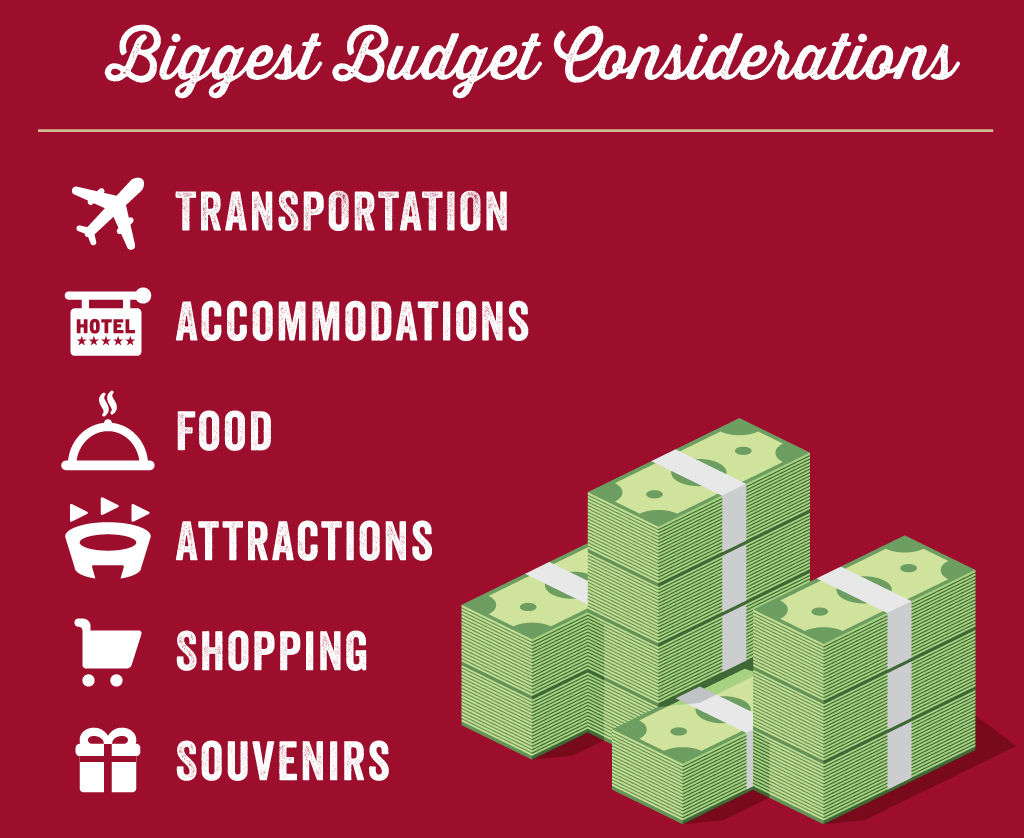
Once you decide how much you want to spend in total, you can divide that money up between the different expenses. Don’t forget to leave yourself a buffer for those unexpected outlays that may pop up. It’s easy to give in to temptation once you arrive, but stick to your budget as much as possible.
Paying for admission ahead of time is a great way to minimize spending. Another option is to sort out cash for various expenses so you can physically see how much money you have left.
Timing Your Trip
Chicago offers budget-friendly activities all year ‘round, but certain times of the year offer greater discounts on things like transportation and hotels. Summer is the busiest time in Chicago in terms of visitors and conventions, and more visitors typically mean higher costs. The visitor numbers tend to taper off in fall and decrease significantly in the winter months.
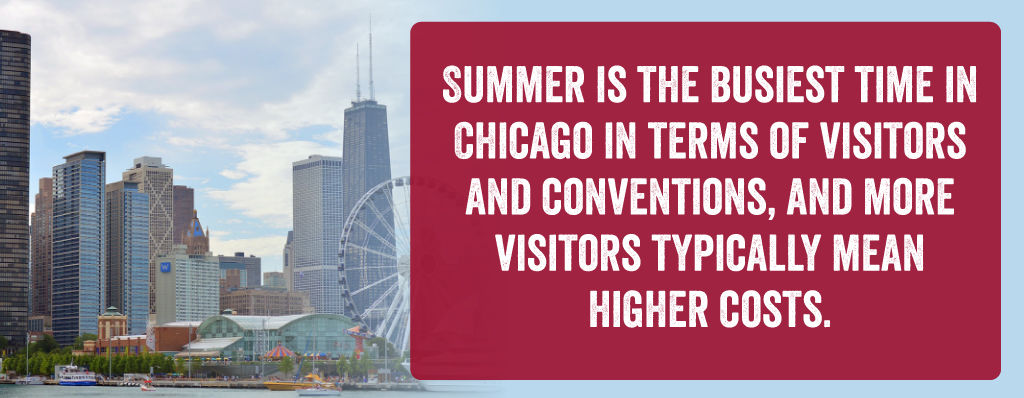
In general, hotels tend to offer the cheapest rates during those less busy winter months when there aren’t as many visitors in the city. Of course, we’re known for our cold and snowy winters, so keep in mind that most of your activities should take place indoors if you head to Chicago in the winter. If you plan to spend much of your time outdoors, pack a heavy parka, mittens, hats and boots so you don’t freeze!
The lower number of tourists during the off-season can also help you get around faster, which lets you maximize your time in Chicago. You can pack a lot into a shorter period of time when you don’t have to wait in long lines at museums or wait for a table at restaurants.
Summer tends to be the busiest time of year for tourists — it can be challenging to find an affordable hotel room during June, July and August. Those more affordable hotels tend to fill up quickly during those times, so plan ahead to get the best rates if your plans take you to Chicago during that time period.
How Long to Visit
The length of your trip to Chicago is one of the biggest factors in determining the overall cost. Hotel accommodations take up a large chunk of the budget, so the more nights you stay, the more you’re spending. Food costs also add up quickly the longer you stay in Chicago.
A long weekend in the city lets you get a good taste of Chicago without spending a fortune on hotels and food. You’ll need to pick a few highlights and understand that you won’t see a lot of the city if you only stay for a few days. Rest assured, though, that even if you stay a week, you won’t be able to come close to covering all the city has to offer.
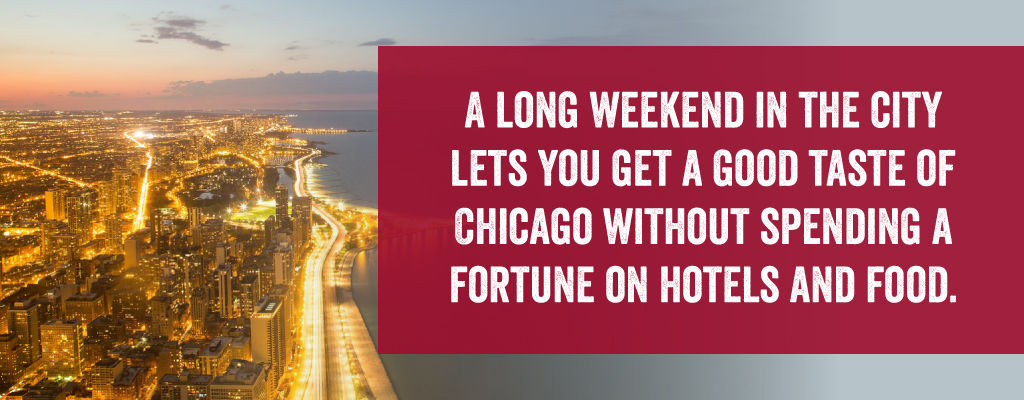
If you can extend your visit a few more days, you’ll have more time to do all of the great free and low-cost activities available.
Saving on Hotels
Your hotel stay is likely going to be one of the largest expenses when visiting Chicago, so if you can cut costs here, you’ll save on your overall budget.
You’ll find many hotels right in downtown Chicago. You may pay a little more for these hotels, but they give you easy access to the attractions you want to see. You can often walk to various museums, parks and attractions. Staying close to the action also saves you time, which means you can pack in more free activities in a shorter vacation than you would if you traveled from a hotel in the suburbs.
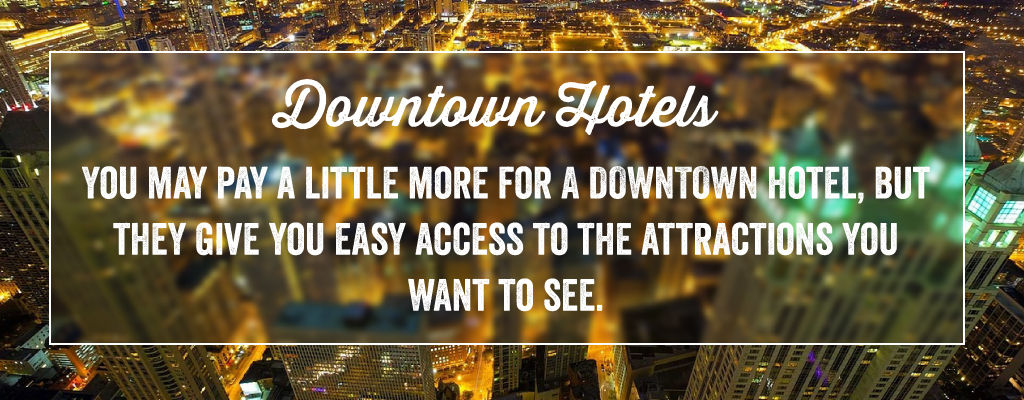
Use these tips to save on your Chicago accommodations:
- Start searching early: When you search ahead of time, you increase your chances of finding a great deal on the dates you want. Check many different hotels, since rates change frequently and you never know who might have a great deal.
- Keep your dates flexible: If possible, keep your travel dates flexible to take advantage of the best rates. You may find moving your trip a few weeks earlier or later saves you a significant amount on your hotel room.
- Search online deal sites: Sites like Groupon and Living Social often have deals on hotel rooms. This can make the room even cheaper than it would be if you booked directly from the hotel.
- Compare total costs: The room rate isn’t the only thing to consider. Most Chicago hotels charge for parking, so if you’ll have a vehicle, it’s important to compare those fees. The amenities also vary. If you won’t be needing a pool or other marquee features during your stay, you may find a basic hotel without them at a cheaper rate.
- Check on transportation: Some hotels may offer free transportation to and from the airport or to area attractions. This feature can save you money on your transportation costs, which in turn saves more money for other activities.
- Go outside the Loop: The Loop and River North neighborhoods are very popular and are close to many well-known attractions, but hotels tend to be more expensive there. Venturing a little further into other Chicago neighborhoods, such as Lincoln Park, can mean cheaper hotel rates. Since the Chicago public transportation system is so good, it doesn’t take much to get from your hotel to the attractions you plan to visit.
- Try Airbnb: An alternative to the traditional hotel route is to book a room with Airbnb. You can often find very affordable options through this service. It can also give you a more authentic vacation if you’re looking to really get into the Chi-town feel.
- Consider hostels: Europe is best known for its hostels, but Chicago also has several hostel options if you’re open to the arrangement. HI Chicago is one such hostel with many amenities, including free Wi-Fi and breakfast. The location is close to many museums and other popular attractions. This option is best for those who don’t mind giving up some privacy to save money.
Getting to Chicago
If you live in the Midwest, driving to Chicago can save you a significant amount of money, particularly if you have a large family or travel group. Depending on your route, you may come across some toll roads. If you stay at a downtown Chicago hotel, expect to pay a daily fee to park your vehicle. When deciding whether to fly or drive, add up the costs of driving plus the cost of gas to determine how much you can save.
If you want to fly, you have the advantage of two Chicago airports. Compare airfare to both Midway and O’Hare to find the best rates. O’Hare is the larger of the two, so there are more flight options. However, Midway tends to have more discount airlines flying into it, so you may find cheaper rates there.
Skip the rental car and take the L to your hotel if you fly into Chicago. The L connects both airports to downtown and is an affordable option to get to your hotel.
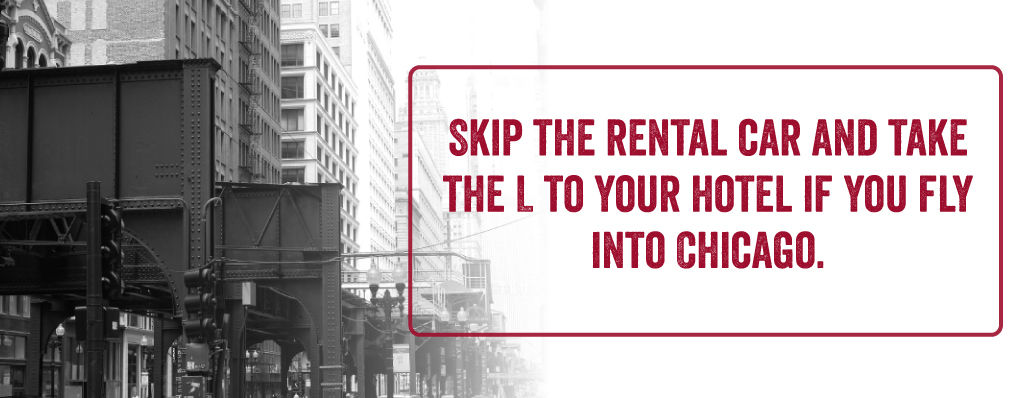
Another discount travel option for some Chicago visitors is the Megabus. This is an express route service to Chicago from several different cities. The fares are typically low, but they vary significantly depending on when you go. Having flexible dates can help you find the lowest Megabus fares.
Getting Around on the Cheap
Once you’re here, you’ll need to think about transportation. Chicago has plenty of cabs, but those fares can really add up in a hurry. Fortunately, we also have a robust public transportation system that’s affordable for travel in the city and to many suburbs.
The L train, or the elevated train, is a popular option with many stops throughout the city. You can get close to most activities if you find the right stop. The bus system is another option.
If you plan to use public transportation a lot while you’re in the city, a pass from the CTA may save you some money. You can get passes for 1, 3, 7 and 30 days.
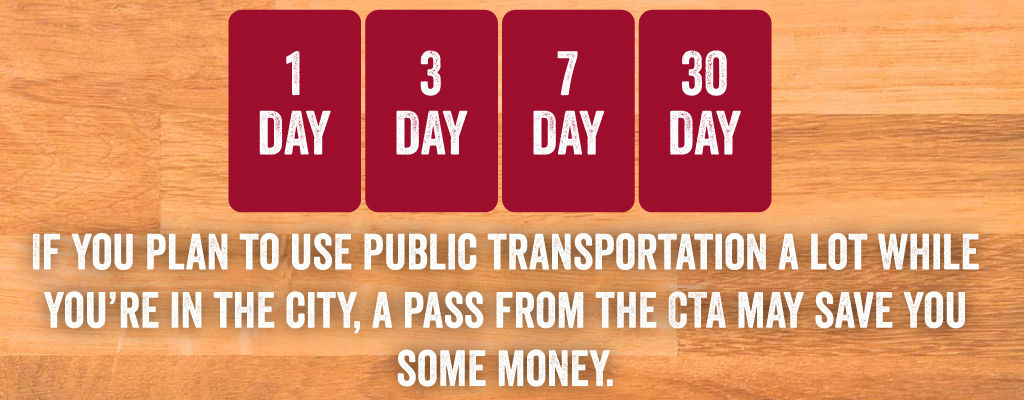
If you stay near the attractions you plan to visit, you don’t have to pay a thing for transportation. Instead, walk to your destination! You get to see more of the city while you save on your budget. Plus: free exercise!
Driving yourself to various attractions is not a practical option in Chicago. Parking is very limited in most areas, so you’ll likely waste time even finding a spot. Once you do find one, expect to pay a premium for it. Every time you go somewhere new, you’ll have to pay another parking fee. Public transportation offers a much more affordable approach.
Free Activities in Chicago
Some museums and attractions in Chicago can be quite pricy, but the city also offers plenty of free options that let you soak it all in. Many smaller museums with a particular focus offer free admission or have a suggested donation. These attractions give you a more intimate look at Chicago and what it has to offer. They often give you an inside look at the city’s cultural scene.
Add these free Chicago activities to your itinerary to save money:
- Lincoln Park Zoo
- Millennium Park, home of the famed Bean sculpture
- Garfield Park Conservatory (requested donation at the door)
- Museum of Contemporary Photography
- Navy Pier (attractions do cost admission, but you can walk around the pier for free)
- Chicago Cultural Center
- Grant Park and Buckingham Fountain
- Window shopping the Magnificent Mile
- National Museum of Mexican Art
- The Oriental Institute at the University of Chicago (suggested donations accepted)
- Cambodian American Heritage Museum
- Public beaches
- Walk along the Lakefront Trail
- Chicago Riverwalk
- Chicago Design Museum
- National Museum of Puerto Rican Arts and Culture
- City Gallery at the Historic Water Tower
- Hyde Park Art Center
- Lincoln Park Conservatory
- Smart Museum of Art at the University of Chicago
- DANK Haus German American Cultural Center

If you travel to Chicago during the summer months, you’ll find several festivals, parades and special events throughout the neighborhoods in the city. Many of those events offer free admission. Others charge a small admission fee, which still makes these events an affordable way to experience the city like a local.
Some of the free festivals include:
- Grant Park Music Festival from June to August
- Chicago Blues Festival in June
- Chicago Gospel Music Festival in June
- Taste of Chicago in July
- Chicago Jazz Festival in August
- Chicago Air and Water Show in August
- World Music Festival in September
- Chicago Architecture Foundation’s Open House Chicago in October
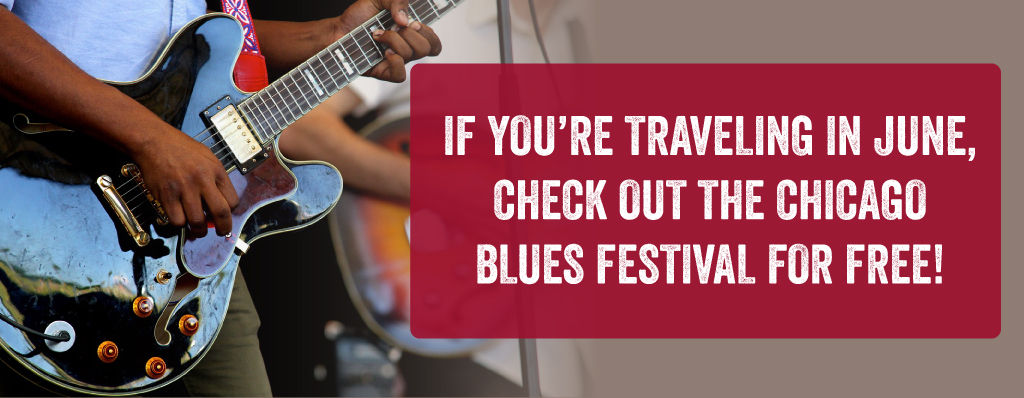
Ways to Save on Higher-Priced Activities
Chicago has a number of museums and attractions that come with an admission fee, including the Field Museum, Adler Planetarium, Art Institute of Chicago, Museum of Science and Industry and Shedd Aquarium. While the cost for one person may not seem that high, the costs add up significantly for larger groups or families. There’s no denying that some of the higher-priced activities are amazing and worthy of a visit, and you’ll be happy to know it’s possible to fit in these more expensive activities without totally breaking your budget.
Use these tips to save money on those higher-priced activities:
-
Buy tickets ahead of time: Most places allow you to buy your tickets ahead of time online, and those pre-purchases often come at a discounted rate. Another perk is the fact that you can skip the long line to buy tickets at the gate.
Stick to the basic experience: Many of the museums offer different ticket prices based on what you do. For example, the Museum of Science and Industry offers general museum entry at an affordable price. However, they also have special experiences, such as an onboard tour of the U-505 submarine, Omnimax films and a coal mine tour that come at an additional cost.
Sticking with the base ticket still gives you the experience and access to most of the exhibits while making the stop more affordable.
Use a discount card: The CityPASS and the Go Chicago Card are two ways to see some of the major Chicago attractions at a discount. CityPASS is a ticket booklet with admission to the Art Institute of Chicago or Adler Planetarium, Shedd Aquarium, Skydeck Chicago, Field Museum and the Museum of Science and Industry or 360 Chicago. You save a significant amount of money over ticket prices at the gate and you get to skip the lines.
The Go Chicago Card is similar, but it gives you the option to choose from more than 25 Chicago attractions, so you can customize it based on your plans.
Additional Tips for Visiting Chicago on a Budget
With all of the free and low-cost options, you really can experience the city on a budget without missing out on the buzz, culture and entertainment Chicago is known for. Some additional tips to save on your Chicago trip include:
- Choose one or two headliners: When you plan your itinerary, choose one or two main activities that may cost a little more. This gives you a chance to experience something like the Museum of Science and Industry or the Field Museum without completely blowing the budget.
- Schedule a Chicago Greeter tour: This free service pairs you with a volunteer who takes you on a two- to four-hour free guided tour of Chicago. The tour can be customized based on your interests. The service requires registering at least 10 business days before your tour, but they also have InstaGreeters who offer a one-hour tour of downtown without advanced registration.
- Save on food: Sure, Chicago has its fair share of high-end eateries with big price tags, but the city also offers plenty of affordable food options. You can get a Chicago-style hotdog on a budget and experience one of the city’s most famous food options. Look for local delis and small eateries for the best prices in town.
- Check for deals: Before you go, check online for special deals. Groupon and Living Social are two good options for getting discount admission to attractions and discount rates at restaurants.
- Look for alternatives: Concerts, theater productions and other performances can be quite expensive. Instead, look for smaller-scale productions, such as community theaters or bars hosting local bands, that will save you a significant amount of money. Oftentimes, the talent of the performers is just as good as the higher-priced shows.
- Venture beyond the loop: Chicago has a hugely eclectic array of neighborhoods full of culture and entertainment. Don’t be afraid to venture beyond the Loop to find the best of those neighborhoods. Many areas have a heavy influence from a particular ethnic group, which gives you a well-rounded view of what makes Chicago so unique.
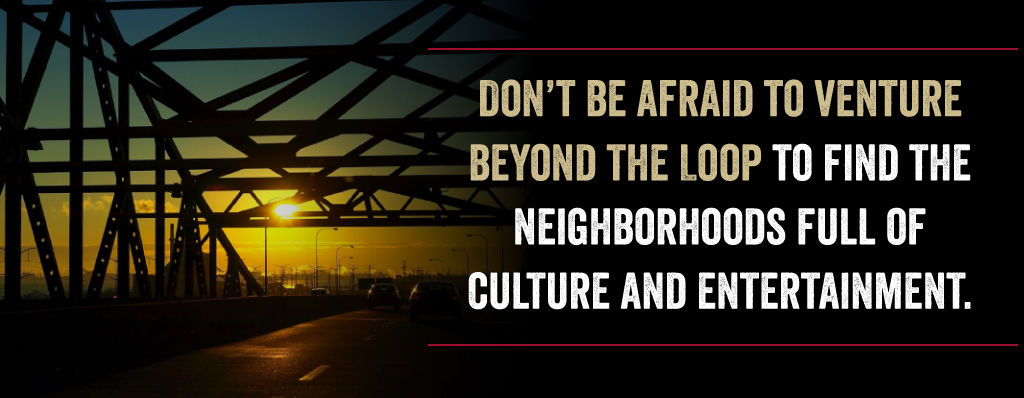
Have you packed your bags yet? Chicago may be a large city, but it’s completely possible to experience it on a budget. While you’re here, don’t forget to experience the world-famous Chicago pizza! Giordano’s has you covered in that department. With locations throughout the city, you’ll have no trouble finding a Giordano’s to satisfy your deep-dish craving!
Source https://southernspaces.org/2010/goin-chicago-and-african-american-great-migrations/
Source https://www.timeout.com/chicago/travel/travel-tips-every-first-time-chicago-visitor-needs-to-know
Source https://giordanos.com/travel-to-chicago-budget/